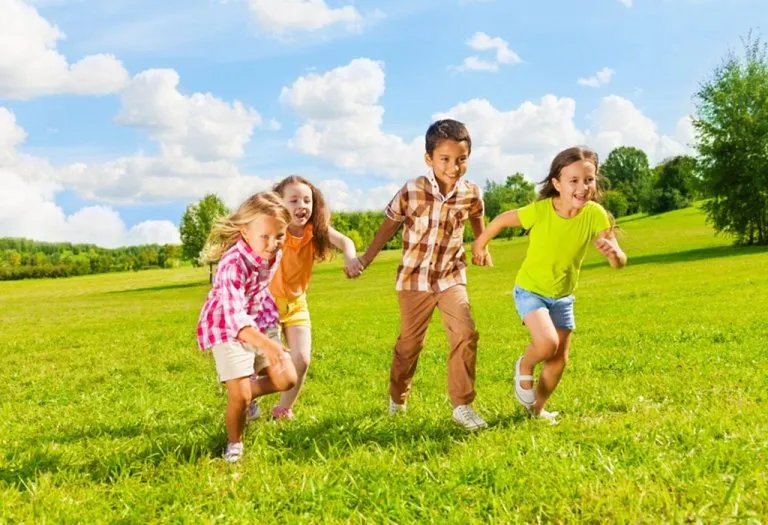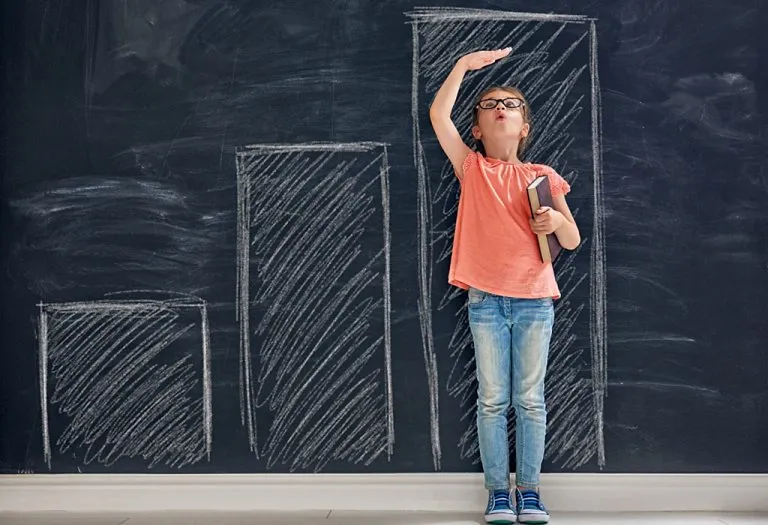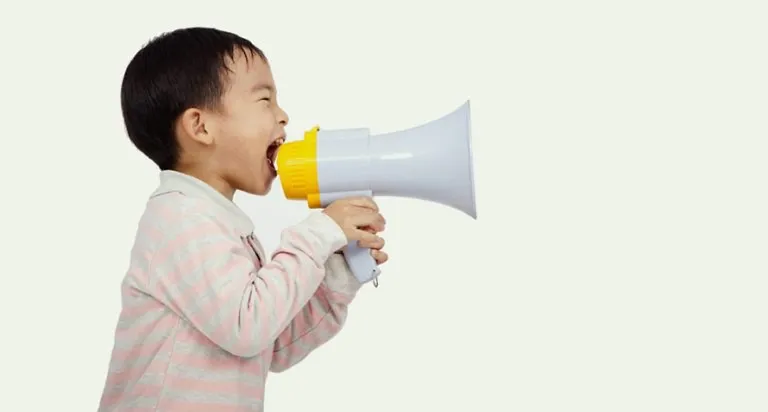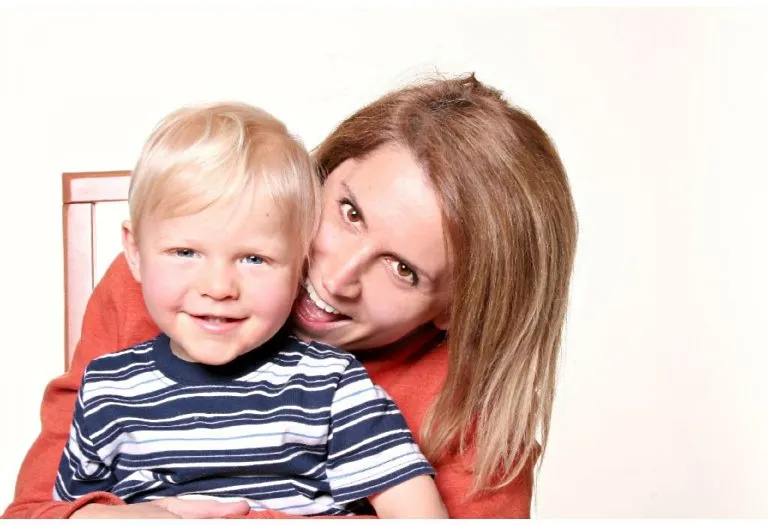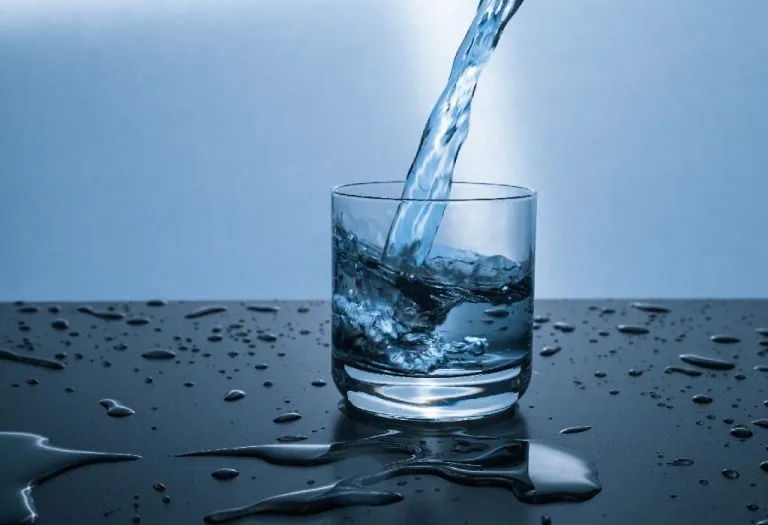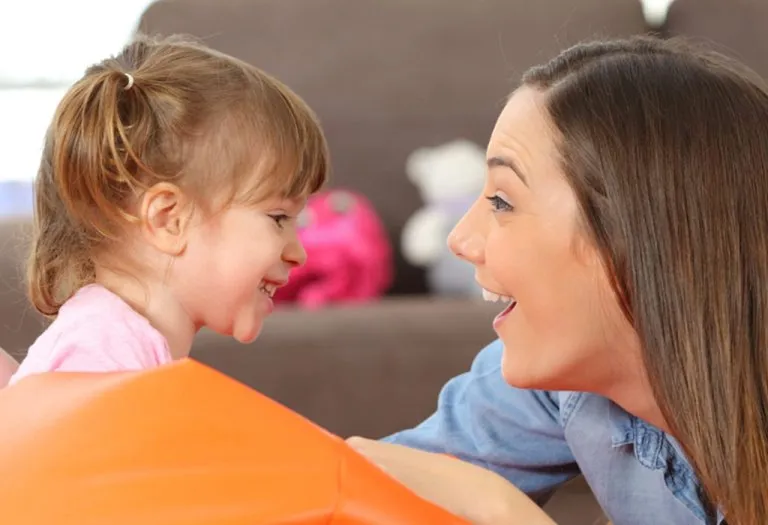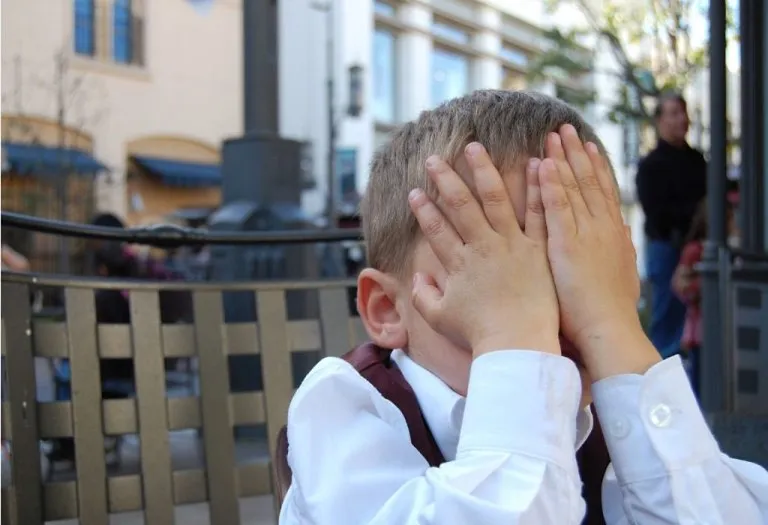Physical Development in Early Childhood – Sings & Stages
- What Is Physical Development?
- Signs of a Child’s Physical Development
- Stages of Physical Development in Childhood
- Ways to Boost Early Childhood Physical Development
- Signs of Physical Development Delays
- When to Consult a Doctor?
- FAQs
Children grow at a rapid pace between birth and two years of age, but once they hit the age of two, toddlers tend to have slower growth. This is when the parents get concerned about the changing eating habits of their child and wonder whether the child is growing normally.
Physical development during infancy happens in a series of growth spurts. It is important to keep in mind that after the growth spurts, the child grows at a standard and steady rate until adolescence. The best way to determine if your child is growing properly is to closely monitor and track his growth. Read on to learn all about physical development in early childhood.
What Is Physical Development?
Slowly but steadily, your child is preparing to take on the structural build that is almost similar to that of an adult. This is considered physical development in a child.
Signs of a Child’s Physical Development
Here are some of the pronounced signs of a child’s physical development:
1. Limbs
The arms and legs of the child will grow longer and will be proportionate to the torso as well as the head. You will also notice that your child appears much slimmer and distinctively thinner than he was as an infant.
2. Muscle Growth
Muscle growth will be faster in order to aid the child’s movement. The muscles of the arms and legs, which are known to be larger, will grow faster than the muscles in the toes or fingers, which are smaller. At this stage, it is essential to provide proper nutrients to your child to help the growth process.
3. Brain Development
Under brain development, your child will be able to perform more complex mental and physical tasks. During early childhood, there is significant growth in the neural fibres in the brain, specifically in the frontal lobes. It is also noted that around 2 years of age, the human brain is already 70% of its adult size. By the age of six or seven, the size of the brain is almost 90% of its adult size. The increase in motor skills can be contributed to this growth. It is also a common practice to measure the circumference of the head in order to figure out the growth rate of the brain.
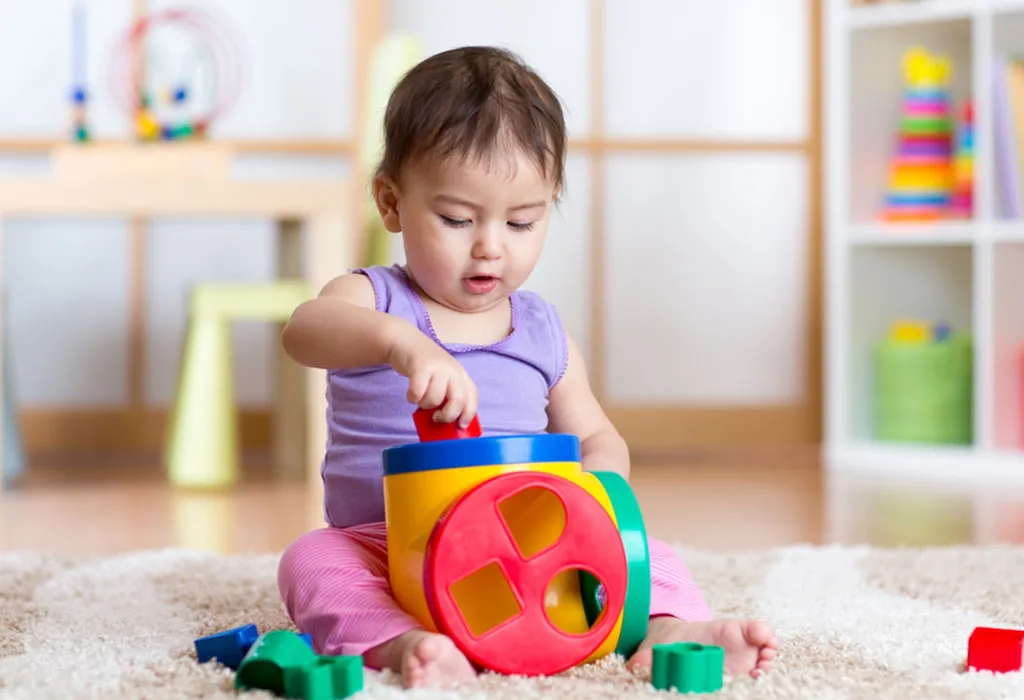
4. Motor Skills
Motor skills are associated with the child’s ability to perform tasks on an everyday basis. It can be anything from running to building blocks. Motor skills can be categorised into:
- Gross Motor Skills
Also known as large motor skills, these are the skills that are required to perform general tasks like running, walking, jumping, or even balancing their bodies as they engage in these activities. The most well-known example of physical development in early childhood is walking.
With gross motor skills, your child should be able to perform some of the below-mentioned activities:
- Walk with a steady balance
- Run comfortably in a single direction or around obstacles
- Throw a ball or catch one
- Hop on each foot several times
- Jump over objects or low lying hurdles
- Kick a ball that is stationary
- Pedal a tricycle
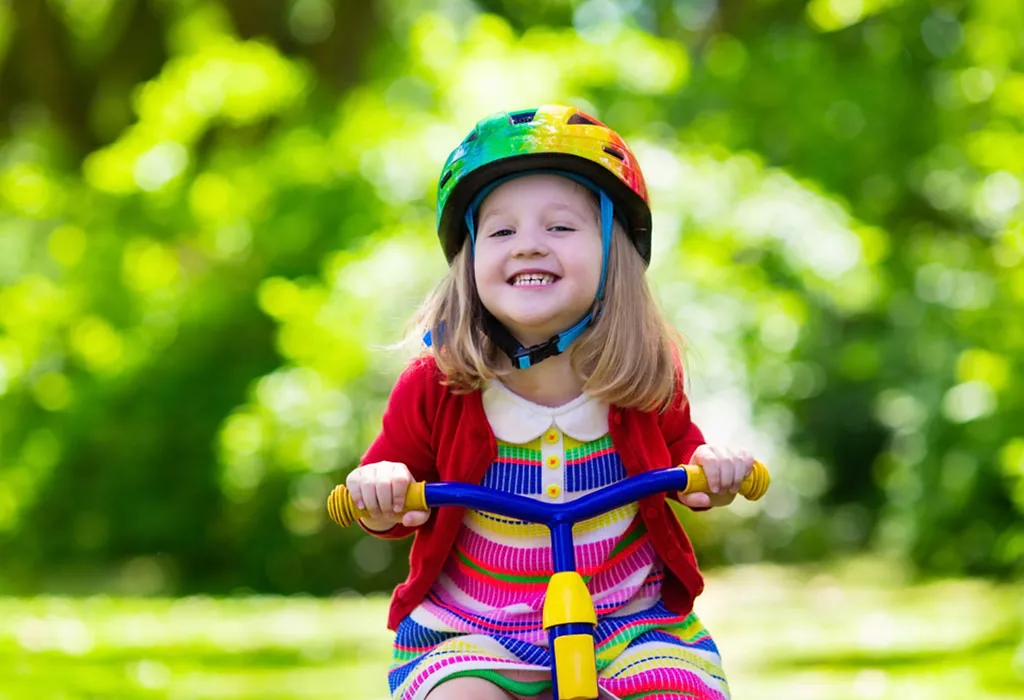
- Fine Motor Skills
Also known as small motor skills, these involve finer movements that hold necessary to perform tasks that may be slightly complicated. These are also associated with the brain development of the child.
Fine motor skills allow the child to:
- Use cutlery
- Brush teeth or comb hair
- Pick up small items likes coins
- Work on simple puzzles
- Draw simple shapes like circles or squares
- Stack up blocks
5. Height
By 12 months, the length of an infant is known to be about 50% of the birth length. When children reach the age of five, they should ideally be double their birth length. Also, boys reach half of their adult height at around 24 months, and girls are half their adult height when they are about 19 months old.
6. Weight
At one year of age, the weight of the infant will be three times that of the birth weight. The growth rate tends to slow down after the first year, and between one and six years, he will be gaining around 2 kg every year.
7. Teeth
Typically, around five to nine months of age, your baby will have lower front teeth. The teeth on the upper front appear at around eight to twelve months of age. Children tend to get all 20 of their baby teeth or deciduous teeth by the age of two-and-a-half years. Permanent teeth replace the baby teeth anywhere between the ages of 5 to 13.
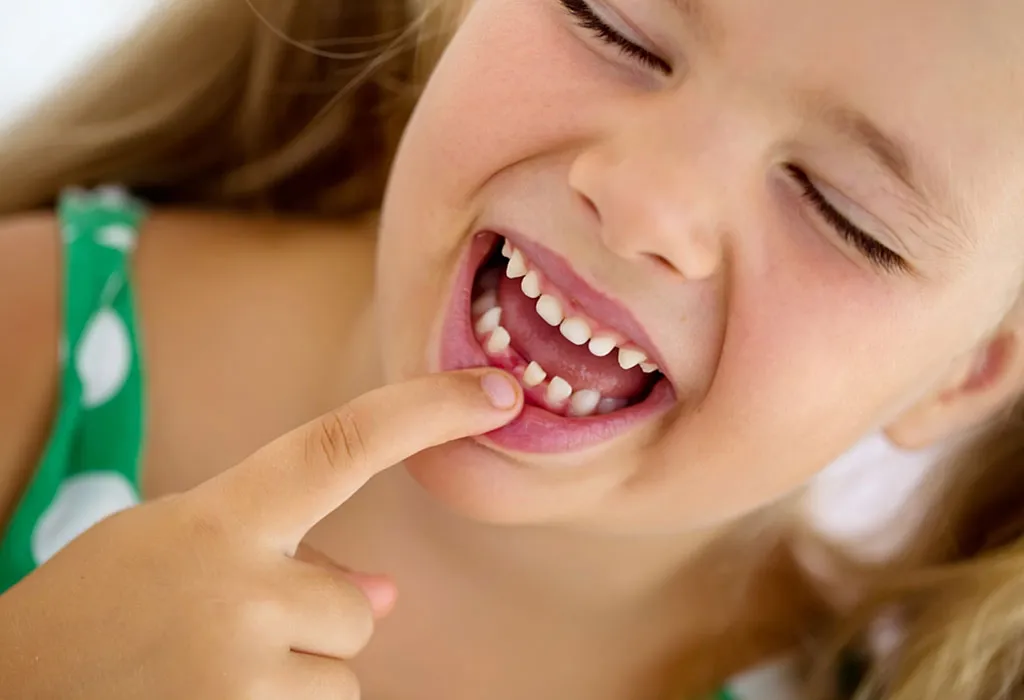
Stages of Physical Development in Childhood
Physical development in childhood involves the gradual acquisition of motor skills, coordination, and physical growth. Below are the primary stages of physical development in childhood, along with key milestones and characteristics.
Babies (0-2 years old)
Babies undergo rapid physical changes and develop foundational motor skills during this stage. These milestones set the groundwork for physical development during childhood.
- Lifts head when on the stomach
- Rolls over from stomach to back
- Sits without support
- Crawls or scoots
- Stands with support
- Cruises along furniture
- May begin walking independently
- Grasps objects
- Transfers objects between hands
- Develops a pincer grasp
Toddlers (2-3 years old)
Toddlers experience significant improvements in motor skills and coordination. This stage is marked by increased independence and physical activity.
- Walks independently
- Climbs stairs with assistance
- Runs
- Kicks a ball
- Jumps with both feet
- Pedals a tricycle
- Balances on one foot
- Builds towers of blocks
- Uses utensils
- Scribbles with a crayon
- Draws simple shapes
- Undresses with minimal help
Preschoolers (3-5 years old)
Preschoolers develop more refined motor skills and greater physical agility. This stage prepares them for more complex physical activities and sports.
- Hops and stands on one foot
- Catches a bounced ball most of the time
- Skips
- Swings
- Performs somersaults
- Cuts with scissors
- Draws a person with 2-4 body parts
- Draws more complex shapes
- Begins to write some letters
Ways to Boost Early Childhood Physical Development
Wondering how to support physical development in early childhood? You can work in some physical development activities for preschoolers to improve your child’s dexterity and overall development:
Activities for Enhancing Physical Development in Infants and Toddlers (0-3 Years)
Infants and toddlers benefit from activities that stimulate both gross and fine motor skills. These activities help build a foundation for future physical development.
- Practice tummy time to encourage lifting the head and strengthening neck and shoulder muscles.
- Set up a safe space for crawling, which enhances coordination and muscle development. Use toys to encourage movement and exploration.
- Engage in simple games like peekaboo and pat-a-cake to improve fine motor skills.
- Try supervised water activities like splashing and pouring water to help develop fine motor skills.
- Play music and encourage dancing, clapping, and swaying to develop rhythm and coordination.
- Create a safe, soft obstacle course with pillows and cushions for crawling and climbing.
Physical Development Activities for Preschoolers (3-5 years old)
Preschoolers need activities that challenge their developing motor skills and coordination. These activities for physical development in preschoolers, prepare them for more complex physical activities and sports.
- Provide opportunities for your child to walk, run, and jump to strengthen muscles.
- Set up a simple obstacle course for jumping over and running around.
- Play catch with a ball, and include games that involve kicking and throwing.
- Take your child on nature walks and encourage them to touch grass, leaves, and flowers.
- Have a dance party with music, especially nursery songs that stimulate fine motor skills.
- Play pretend games like balancing on a tightrope laid on the ground.
- Encourage drawing and creative activities around the house.
- Have a block-building contest to enhance hand-eye coordination and fine motor skills.
- Play an easier version of “Simon Says” to encourage movement and following directions.
- Provide toys like a tricycle, child-sized basketball hoop, or hula hoops.
- Use a small inflatable pool for supervised splashing and paddling.
- Let your child hop in a bouncy castle or on a trampoline under supervision.
- Involve your child in simple, fun chores like bathing the dog or washing the car.
Signs of Physical Development Delays
Recognizing the signs of physical development delays in children is crucial for early intervention and support. These delays can manifest in various ways, affecting gross and fine motor skills, coordination, and physical growth. Here are some common signs to watch for:
- Your child appears to have weak or limp movements.
- Your child shows stiff or restricted movements.
- Your child struggles to keep up with peers during playtime activities.
- Your child tires quickly compared to other children.
- Your child is not growing at the expected rate for their age.
When to Consult a Doctor?
There’s a wide range of what’s considered normal for development in early childhood. However, there are some signs that might indicate a delay. Consult the doctor if:
- Your child’s growth rate significantly deviates from the expected chart, or their weight or height falls consistently below or above normal percentiles for their age.
- Your child seems significantly behind in reaching milestones like rolling over, sitting up, crawling, walking, or talking.
- Your child has very stiff or floppy muscles.
- Your child has weakness on one side of the body, indicating a neurological issue.
- Your child experiences seizures.
- Your child has trouble seeing or hearing.
FAQs
1. What should I do if my child favors one side of their body?
If you notice your child consistently favoring one side of their body, such as using one hand or foot more than the other, it may indicate an underlying issue with muscle strength or coordination.
2. How can I tell if my child’s unusual walking pattern is a concern?
An abnormal walking pattern, such as walking on toes or having an uneven gait, can sometimes be a normal part of development. However, if it persists or is accompanied by other signs of motor delays, it’s important to seek medical advice.
3. Why does my child have trouble with tasks like using utensils or drawing?
If your child struggles with fine motor skills, such as using utensils, drawing, or manipulating small objects, it could be a sign of developmental delay. Early intervention with occupational therapy can help improve these skills and support your child’s overall development.
4. Is it normal for my child to avoid physical play and activities?
While some children may naturally prefer quieter activities, a consistent lack of interest in physical play and activities could indicate a delay in motor development. Consulting a pediatrician can help identify any underlying issues and provide guidance on encouraging more active play.
Physical development in children should be complemented with proper nourishment and a healthy balanced diet, as this ensures proper growth and development of the muscles and bones.
References/Resources:
1. CDC’s Developmental Milestones; CDC; https://www.cdc.gov/ncbddd/actearly/milestones/index.html
2. What is “Early Intervention”?; CDC; https://www.cdc.gov/ncbddd/actearly/parents/states.html
3. Does My Child Have Physical Developmental Delays?; American Academy of Pediatrics; https://www.healthychildren.org/English/MotorDelay/Pages/default.aspx
4. Gross motor skills: Birth to 5 years; Children’s Hospital of Richmond; https://www.chrichmond.org/services/therapy-services/developmental-milestones/gross-motor-skills-birth-to-5-years
5. The Growing Child: Preschool (4 to 5 Years); Children’s Hospital of Philadelphia; https://www.chop.edu/conditions-diseases/growing-child-preschool-4-5-years
6. Child Development and Early Learning (Transforming the Workforce for Children Birth Through Age 8: A Unifying Foundation); National Library of Medicine; https://www.ncbi.nlm.nih.gov/books/NBK310550/
7. Child development (1) – newborn to three months; Better Health Channel; https://www.betterhealth.vic.gov.au/health/healthyliving/child-development-1-newborn-to-three-months
Also Read:
Major Stages of Child Development
Role of the Family in Child’s Development
Social And Emotional Development In Children
Factors Affecting Child Growth and Development
Moral Development In Children – Stages and Concepts
Was This Article Helpful?
Parenting is a huge responsibility, for you as a caregiver, but also for us as a parenting content platform. We understand that and take our responsibility of creating credible content seriously. FirstCry Parenting articles are written and published only after extensive research using factually sound references to deliver quality content that is accurate, validated by experts, and completely reliable. To understand how we go about creating content that is credible, read our editorial policy here.






